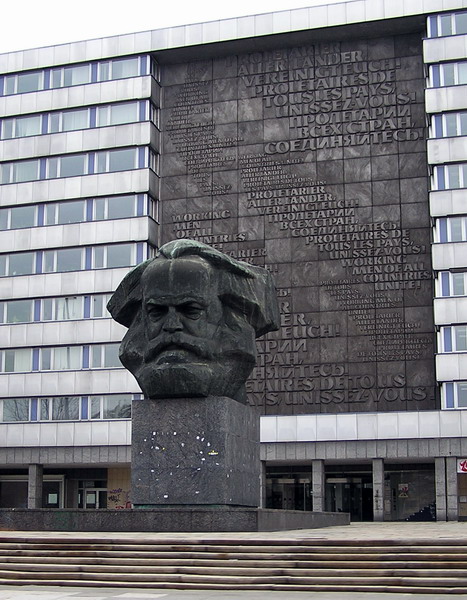Chemnitz is a city in Saxony, more exactly in the Free State of Saxony (Freistaat Sachsen), in the Eastern part of Germany. The city was formerly part of the German Democratic Republic (DDR). Its name during DDR-times was Karl Marx Stadt—it still has a huge bust of Karl Marx in the city center.
The events which took place in this medium size German city in late August 2018 shook the German political landscape like few other events during recent years and brought the coalition government of Chancellor Angela Merkel onto the brink of break up.
Like other cities in Germany, Chemnitz has been affected by the decision of German Chancellor Angela Merkel in fall 2015 to open the German borders and allow the free flow of asylum seekers into Germany. Thousands of asylum seekers from places like Syria, Iraq and Afghanistan appeared in the city.
Many of these migrants were law-abiding but a disproportionate number of them were not. The below statistics is quoted from the Police Criminal Statistics, 2017 for the city of Chemnitz:
Police has identified a total of 9,453 suspects …
A total of 4,273 non-German suspects were identified (2016: 5,676).
This corresponds to a share of 45.2% (2016: 51.8%). Over half (52.5%)
violated provisions of Residence / Asylum laws.
The above statistic means that about 21 % of the suspects for “general crimes” (i.e. crimes not related to Residence / Asylum laws) were foreigners. This percentage is quite a lot higher than the population share of the foreigners living in Chemnitz, which is currently 8.01 %.
The statistics quoted above is for the city of Chemnitz and it doesn’t go into much more detail, for example about the types of crimes committed by foreigners or the types of the foreigners (e.g. university students, asylum seekers, etc.). However, the Police Criminality Statistics Yearly Overview for 2017 for the whole of Saxony—the German Federal state in which the city of Chemnitz is located—tells a bit more about these things. For this reason I’ll continue discussing the Saxony criminal statistics instead of the specific Chemnitz statistics:
Among the suspects were 29,174 non-Germans, 7,722 people and 20.9 percent less than in 2016. …
A total of 18,949 non-Germans were identified for “general crimes” [i.e. crimes not related to illegal entry or illegal stay in Germany], 554 more than in 2016. Thus, 20.7 % of all suspects who were associated with general crimes had no German citizenship. For comparison: in 2016, there were 19.7 % in Saxony, on average across all federal states 40.4 percent.
Among the non-German suspects were 6,825 asylum seekers, 1,198 fewer than in 2016. Of these 6,563 (96.2 %) were involved in general criminal offenses. 10,173 non-German suspects (34.9 %) were illegally in the Free State of Saxony.
Thus, the share of foreigners on “general crime” was around 21 % for Saxony as a whole. Their share on violent crime was a lot higher: 34.8 % . This represented a 2.2 % increase as compared to the year before (2016).
For offenses against life (31.8 %), rape and sexual coercion (31.8 %) and grievous bodily harm (35 %), about one in three suspects did not have German citizenship.
The total number of asylum seekers in Saxony was 23,759 in July 2018. According to the above Police statistics 6,825 of these were crime suspects *. This corresponds to 28.7 % ** of the total number of asylum seekers in Saxony.
Thus, almost one third of these people—who supposedly came to request protection from Germany—was investigated for crimes committed on German soil. Because of the high proportion of violent crimes, many of these crimes received strong attention from the population and were often highly visible. Large parts of the population felt left alone with these problems by politicians and by the judicial system and felt increasingly frustrated.
The YouTube video below contains an interview with a disc jockey who has worked in a disco in the Chemnitz city center until very recently. The video was published on 28 August, two days after the tragic events to be described later. The disc jockey describes the horrifying security situation in the city center during the last 2-3 years and the failure by the Police and by the authorities to remedy that situation. The disco he has been working at is now closed, partially because of the bad security situation at night. The interview is in German, but subtitles in English are available via the auto-translate feature of YouTube.
The situation described above provided the backdrop for the events that took place in late August 2018 in Chemnitz.
*The Police statistics doesn’t say how many of the asylum seeker crime suspects were actually living in Chemnitz. However, it is probably safe to assume that most of them were residing in Chemnitz.
** Note that the number of asylum seekers living in Saxony is from 2018 and the number of asylum seeker suspects is from 2017.

Be the first to comment on "What happened in Chemnitz, Part 1: the preliminaries"